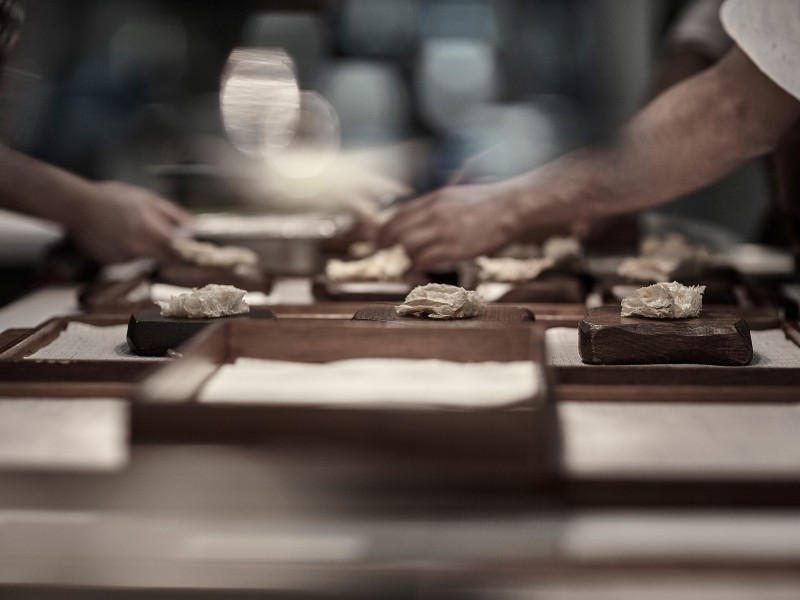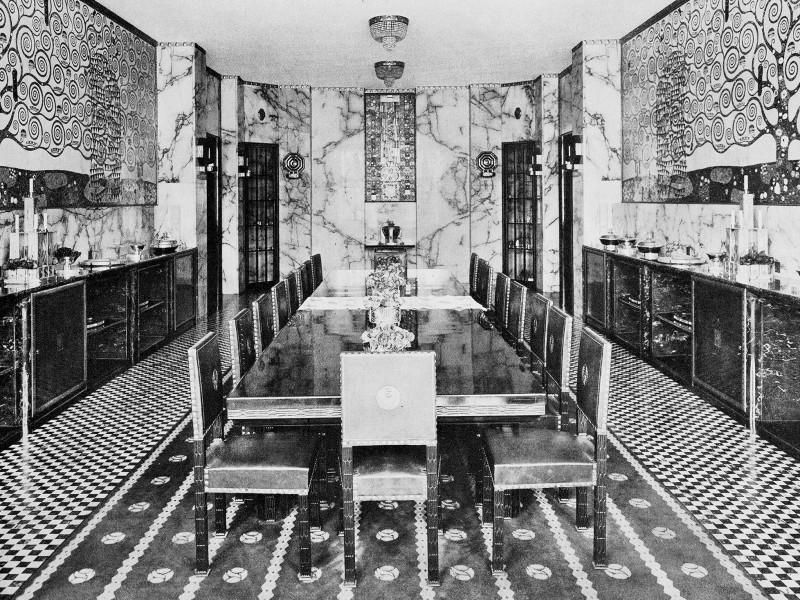Image making in the 21st century is a nuanced and revolutionary art, aspired to by many as a retreat from the mundane, and an opportunity to see the world from an enigmatic new perspective. With current trends in fashion photography leaning heavily on a nostalgia for analogue, there are a mere handful of photographers who are genuinely pushing the boundaries of their craft and Tim Richardson may be counted amongst them. Known for his bold digital experimentation and images pulsing with colour and movement, the Australian photographer has called New York home since 2005, a move he made after finding his feet in both art direction and photography in his hometown of Sydney. This year Richardson celebrated a decade in the Big Apple with the May release of Spiritual Machine, his second book that delves into the past five years of his work, and which he describes as “a crystallisation of many ideas—it’s a thematic approach, it is not a retrospective”.
Crystallisation is a fitting metaphor (and Richardson chooses his wisely) for his postmodern approach to photography, wherein the photographer’s possible space evolves through filmy layers of symbolism, techniques and effects that respect the classical ground roots of his work propelled forward by new technology and changing attitudes. It is a world of contrasts—aesthetic and otherwise—of which the book’s title Spiritual Machine is a succinct summation. “The name has a few meanings,” explains Richardson, of the Prestel-published book, which was designed by famed New York art direction bureau Baron & Baron. “It is sort of a deliberate fusion of two very opposite words. When I am working I use dualities to start ideas and create a context for what I am shooting. It is about humans and technology, which are sometimes diametrically opposed and sometimes unified. It is about that in between state. Now fashion is so influenced by media in terms of execution and representation. The way that design and business are fused; there are a lot of cross over points. The creative process can be compromised by the speed of things right now. I try to have a friction going on in my work, taking opposing aesthetics and trying to find magic when they meet. It is about exploring tradition and blowing it up a bit with futurism.”
Scattered with quotes by his avant-garde heroes like James Graham Ballard, Philip Kindred Dick, Joy Division and American novelist William Gibson (whose novel Neuromancer ushered in the cyberpunk genre), Spiritual Machine embodies Richardson’s respect for great thinkers who imagined the unimaginable—each paving their own way with speculations on the 21st century’s dystopian and utopian possibilities. What it doesn’t explicitly reveal is Richardson’s learned sense of homage that is woven throughout his flickering, fragmented images, where references to Francis Bacon or perhaps Caravaggio float beneath the surface of his meticulously constructed fashion landscapes. “Everything in the book is based on the human figure,” continues Richardson, a subject that he both celebrates and deconstructs in myriad ways—from abstract portraits exploding in showers of digital confetti to wide, elaborate tableaus where models spin like dancers. “Dance and movement in general has always fascinated me,” he said, “I like to study the body in flux, the way it changes shape. A friend recently referred to it as transfiguration.” One particularly evocative menswear shoot for the now-defunct Vogue Hommes Japan took Francis Bacon’s transmogrified portraits as inspiration for a sexually charged series where leather harnesses, tuxedos and bare, virile flesh disappeared in flurries of movement like human smoke.
Dance itself enters concretely into Richardson’s oeuvre, with one series of stills immortalising 6 Breaths, a performance at the 2010 Venice Dance Biennale featuring dancer Richard Cilli, choreographed by the Sydney Dance Company’s choreographer Rafael Bonachela. “It was the first time I used 3D scanning,” explains Richardson, who was one of the earliest fashion photographers to adopt the technique. “It became a gigantic floating projection of marble figures assembled from fragments into a unified coupling, which then dissolve again into fragments in a cycle.” That project spawned another a year later entitled Perpetual Motion, in which Cilli’s acrobatic sequences were captured through time, distilled into swooping curvilinear forms, and transformed with chrome-like metal finishes to become extraordinary alien images. “Learning how to direct through time is such a different mind-set to shooting print,” explains Tim, referring to the industry demand for moving image that so often accompanies print commissions today. “Our generation is having to perform in a much broader dynamic than ever.”
In order to produce such gripping visual studies, Richardson relies not only upon the computer’s 3D capabilities but the forward-thinking outlook of his collaborators. He counts stylists like Nicola Formichetti, Robbie Spencer, Michelle Jank, and makeup maven Pat McGrath amongst his confidantes. “It is funny how London stylists have given me the most room to experiment and try new things,” admits Richardson, citing a film work for Dazed Digital with Australian jeweller Jordan Askill amongst those early achievements. Entitled Crossing, the 2009 piece placed Askill’s delicate avian jewels in a masculine context, blurring lines between body and coastal landscapes. “Both the photography and film represent a symbolic journey” said Richardson, “a vision of the fragility of adolescence in the eternal presence of nature. ‘Youth’ becomes a mythic figure, floating above the ‘eternity’ of the oceans massive horizon-crossing the divide between the real and the imaginary.”
For all the fragility he attributes to his male subjects, Richardson’s women border on Amazonian—their contours and extremities accented with perspective and digital manipulation, a sensual athleticism defining their dramatic poses. Powerful figures like Japanese actress Rinko Kikuchi, supermodel Guinevere Van Seenus, and New York socialite Michelle Harper count amongst Richardson’s subjects; each rendered almost superhuman in his exploration of multiple exposures and stitched images, floating diaphanous fabrics and fragmented post-production effects that offer a second life to the architectural jewels and props of his collaborating stylists. Nicola Formichetti in particular, known for his youth-driven futuristic punk style, has championed and complemented Richardson’s work, after a chance meeting in a New York bar saw them shooting Elle US just one week later. That shoot involved mounting a quest for their ‘digital muse’ during the super-stylist’s tenure designing Mugler in Paris: a project which was, as Richardson explains, “an embodiment of the way that technology, design and software came to be a part of how fashion is made. It was an allegory for all of that. It was a testing ground for me.” It is indeed Formichetti’s wild imaginings that have adorned Richardson’s images with a wealth of embellishment derived from both high fashion and street culture, with later shoots for V Magazine and Sunday Times Style incorporating intricate body jewellery, eyewear and millinery, all pushing graphic boundaries to question where the body begins and its decoration ends. “I still look at the work of Hussein Chalayan,” said Richardson, of his own appreciation for fashion and the deep cultural references that mark the work of its greatest practitioners. “With Alexander McQueen being canonized right now (his exhibition Savage Beauty being presented at both The Metropolitan Museum of Modern Art in New York and the Victoria and Albert Museum in London to stellar reviews) there are some sweet spots in fashion that are so iconic that they are being recycled right now. It is interesting from an image-making perspective.”
Also intriguing is gauging to whom Richardson’s work has appealed, and to whom it has not—the fashion world’s dusty establishment can be a little slow on the uptake at times. Even today, his work remains primarily in avant-garde magazines, a fact the photographer is happy to concede. “There is an old mentality that comes from the purists,” said Richardson of his predecessors, the canonical top photographers whose work process remains unchanged for decades, “And another from our generation that can’t afford to be. It is about exploring techniques that were used in science fiction films and bringing them into print shoots and beauty campaigns. And I think my work, and my latest book Spiritual Machine in particular, embodies that multidisciplinary process.” Richardson feted his new tome during the New York edition of Frieze Art Fair, inviting his audience into his digital universe at Milk Studios through a large-scale photographic show and a video installation that Richardson explains as a mixture of animation and a 3D scanning. “When I did my first shoot with Guinevere, we ended up doing some 3D scans of her at the same time,” he said. “We scanned her to get her face and her body, and then I created the animation after with a company called Framestore. They are widely known for their special effects work for Gravity and produce really beautiful work. I basically had this idea of her being a kind of glass couture creature. You can see some Alien references, Prometheus and a few other things. I wanted to take some of that darkness and bring a bit of life to it. It’s almost prismatic and crystal or gem-like.” Equipped with such ambitions to evolve contemporary fashion imagery through the exponential possibilities of the digital realm, Richardson is proving wrong the multitude of pretenders in his field. While others recycle and plagiarise the work of their predecessors under the guise of homage, Richardson’s vision transcends the traditional boundaries of the craft; bridging image-making disciplines to tell his dynamic tale of our stark, bright, hybrid future.
Image Credits:
Image 01. Bring on the Apocalypse, 2014. London Sunday Times Style. Fashion Director: Nicola Formichetti. Model: Brooke Candy.
Image 02. Bring on the Apocalypse, 2014. London Sunday Times Style. Fashion Director: Nicola Formichetti. Model: Brooke Candy.
Image 03. Perpetual Motion- III, 2011. Motion-Capture Study. Choreography/Performance: Richard Cilli.
Image 04. Rise of Rinko, 2014. V Magazine. Fashion: Nicola Formichetti. Model: Rinko Kikuchi.
Image 05. Spiritual Animal - IV, 2014.
Related Features
-
79
-
-
-

